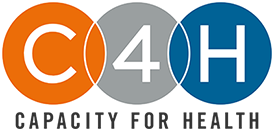Nonprofit managers can benefit from applying the principles of Agile methodology to the change management process. Though Agile was originally created to manage the development of software products, this robust tool can also help nonprofits that are struggling to affect change in their organization.
This article will help you leverage Agile to help with an intangible “product” like the change management process.
Agile Change Management Methodology
Traditional change management principles engage a team in a linear process that includes:
- Stakeholder mapping.
- Development of a communications plan.
- Scheduled activities and deployments.
- Impact measurement.
Typically, these processes are implemented at the top of an organization and trickled down. Therein lies the problem: change management methodology assumes that administrators are the main implementers of the change. Agile takes the opposite approach—instead of a top-down change initiative, Agile engages stakeholders throughout the process while seeking improved communication and collaboration.
Agile has 12 principles that follow this methodology. Each principle emphasizes a customer-first strategy that acknowledges change as the core of any project. The core focus is to respond to change at every stage in the process, “even late in development.” Agile requires a continuous focus on excellence fueled by a collaborative approach toward the goal. It is the opposite of the traditional approach to managing change.
The Agile methodology was created by a team that sought to create a new way of managing large and complex projects. Agile was designed to allow more flexibility and innovation than the more traditional approaches to project managment. The Agile Manifesto suggests four key tenets to the methodology:
- Individuals and interactions over tools and processes.
- Working product or service over comprehensive documentation.
- Customer collaboration above contract negotiation.
- Responding to change over following a plan.
Today, Agile has evolved as an organizational tool that extends beyond software. While there are many implications for project management, these tenets also help engage employees in the success of a change management initiative.
What’s Wrong with Traditional Change Management Principles?
What’s wrong with traditional change management methodology is that it fails to take into account today’s dynamic and ever-changing markets and service populations. Agile takes traditional change management principles, discards the parts that don’t work, then adding the flexibility and speed that comes from software development. Research supports this effort; PWC says traditional change management principles are effective only 54% of the time. McKinsey cites traditional change management failure as higher, at 70%.
Traditional change management principles do not welcome suggestions from outside a hierarchical structure. Forbes says, “Employees must fear that raising concerns or proposing alternatives one too many times will earn them the perilous brand of ‘resister.’”
Agile recognizes that flexibility is a crucial part of any change management process. Under an Agile approach, markets shift, and the wants, needs, and priorities of your target audience change. The Agile methodology coaches the embraces constant (though not impulsive) changes in strategy to adapt to these fluctuations. Adaptability is at the core of Agile, along with the sense that the overarching goal and implementation processes may shift, but that this flexibility will create a better end product.
How is Agile Different?
Applying Agile to an organization’s change management methodology would revamp the approach into a constant iteration of adaptation and reinvention. Improvement would be sought as part of a constant process, not a project-based effort with a beginning and an end. Employee buy-in becomes less of an issue when communication becomes a welcomed part of the change management process. It avoids traditional change management methodology that can feel like a bludgeon to force a new process from the top down. It seeks to engage everyone in the spirit of fast and continuous improvement.
Capacity for Health (C4H) specializes in engaging teams in the process of change management. We help organizations stay agile in their process of managing change. Contact us to find out more.







